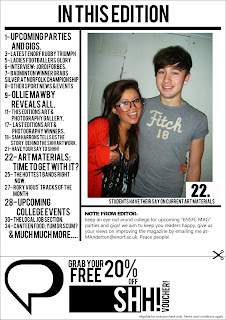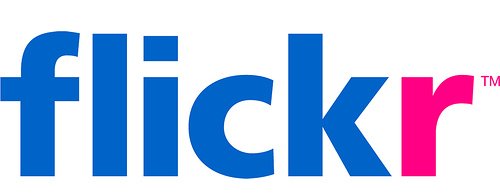 The particular counter-culture i am predominantly aiming my magazine at are the 'mods', but categorically speaking; many other aspects of this counter culture come into play. The magazine as a whole is targetted towards working-class white and black people, as elements of reggae and west indian culture combined to create Two Tone and Ska music in the 70's.
The particular counter-culture i am predominantly aiming my magazine at are the 'mods', but categorically speaking; many other aspects of this counter culture come into play. The magazine as a whole is targetted towards working-class white and black people, as elements of reggae and west indian culture combined to create Two Tone and Ska music in the 70's. Although when the magazine is first produced, it will start with a highly niche market; i anticipate that due to the new coalition government, the counter culture being the mods will rapidly begin to evolve, especially with 'Rudeboy Magazine' inspiring them to.
'Rudeboy Magazine' offers both young, new to Ska people the chance to become a fan of it, especially if they agree with the political policies that go behind the music. Of course, the magazine relates back to the men that experienced the era in the 70's and 80's, involving news and reviews on old musicians that they may have listened to. When i consider my research; as far as i am aware, a Two Tone & Ska magazine was released in the mid-eighties, unfortunately just as the era died down.
Taking demographics and pyschographics into account; I needed to relate to this once powerful counter-culture in terms of style, attitude, interests, and lifestyles. Below is Terry Hall, the iconic lead singer of 'The Specials', of whom i chose to use as a style model for the characters in my magazine.
The image on the left shows Terry in his youth, and how he appears now. He is still heavily influenced by SKA music, as i am fully aware many others are too.
I knew that i needed to relate his character to my own, therefore, i created the lead singer of 'The Stereotypes',(see right) with similar attributes including:
- Posture- in every single photo i took of my own, i knew it was fundamental to stand loosely, and relaxed, just as Terry Hall in the photo above. I chose not to sit down just as Terry, as i don't want to match the photo exactly. Therefore i chose for my character to stand up with his arms down.
- Gesture- There are no bodily actions of which connote anger or aggresion, except from a serious facial expression. This gsesture was typical of musicians, therefore of course, i chose to recreate it.This way, the band doesn't connote aggression; as typical SKA and two tone musicians don't act aggresive, they simply create music in anger of political situations.
- Shot type, Camera angle- A typical camera angle in Ska and Two tone music shoots, is the camera looking slightly downwards on the musicians. This connotes the fact that they aren't powerful, and just like everybody else trying to send a message to the government. Although not shown in my image above, many of my other images, including the one i chose my my front cover image has the typical angle expected in a Two tone magazine.
- Lighting- after my research, i noticed that many images of Ska musicians such as the above image of Terry Hall, were set in a dark setting, yet given a large amount of light to one area. I recreated this, with many of my photos. I wanted to maintain authenticity of the images, and relate to the genre i am focusing on.
- Costume- Probably the msot important aspect that i needed to focus on; as the image of a SKA musician was just as important as the music they created. The style associated with Ska music is referred to as 'MOD', with black chino trousers, white/black shirts, brown/black brogue shoes, and accesories including black shades, cotton ties, bow ties, trilby hats and blazers. Just as Terry Hall, who is a perfect example; i chose to wear black trousers, black shoes, a white shirt and black cotton tie, with black shades. The costume is typical wit any Ska musician, and choosing another option wouldn't have been the right choice.
- Expression- Also, another very important aspect to be looked at was the facial expressions of my characters. Having a happy, laughing character in my photos wouldn't capture the authentic feel of the real Ska musicians from the past- who were reknowned for their serious, frowning facial expressions. Terry Hall is again, another great example for this, therefore i studied how he uses facial expressions to send a serious tone, and recreated this with my own characters.
- Hair- The hair of my characters admittadly, wasn't the most of my worries, as i was fully aware of the fact that the musicians such as The Specials didn't particularly care about having slick hair, it was just very messy. Again, i recreated this with my characters.
A few other comparisons-
What setting did you decide to use?
After my research of past Ska music photos, i noticed that often, the background is an urban setting, sending working class connotations of the band- so they can relate to the audience. These urban settings include grungey alleyways, brick walls, and graffitied fences. I chose to take my photos against a brick wall, communicating the working class image of the band, just as other musicians.
Have you used Slang?
Of course, i am aware of the fact that predominantly, my audience are 16-21 year olds, therefore slang language is the obvious choice. Formal text just wouldn't be very coherent to them, and of course, wouldn't suit the image of the magazine. The use of ellipsis, and swear words eliminates the option of euphemism, and uses everyday language that my audience are exposed to.
Have you reinforced stereotypes of your audience (youth) or have you undermined them?
Although being a very niche magazine, i create a situation of were the magazine is being introduced whilst many Ska and Two tone musicians are emerging in the charts. There are many sub-cultures amongst young teenagers to date, such as 'emos' and 'punks', yet i decided to focus on a stereotypical teenager, who likes a whole variety of music.
Have you represented a particular gender, class, or race?
When the two tone and Ska era began in the 70's the audience were predominantly male, therefore i have chosen to focus more on males in my magazine, rather than females, as i am aware that the males will be the people buying my magazine. Two tone music is 'music for the poor' and has been ever since it started; focusing on unemployment and political issues. As i am aware of my typical audience, the chosen class that i focused on was Working class, relating to them through the use of images and language. Finally, two tone music was famous for being multi-cultured. Its name speaks for itself, as it merged both black and white people together, after a time were britain was a very prejudice country.
Rudeboy magazine focuses on subverting stereotypical views of 'mods' in the UK, by communicating political issues, without connoting violence. Of course, Rudeboy represents working class britian in a positive manner, communicating the fact that its a country to be proud of.
Finally, i decided to give Rudeboy a pro-consumerist stance, as i am aware that the audience will be very interested in their clothing and other similar goods. I want to ensure that i don't allow too many pages for advertisements, as of course, the contents comes first. People buy a magazine to read whats in it, not to look at adverts. The sort of adverts which will be featured in my magazine will be brands which are strongly linked to the working class britain, such as Fred perry, beer brands, and taking into account teenagers will be reading; mobile phones.
When the two tone and Ska era began in the 70's the audience were predominantly male, therefore i have chosen to focus more on males in my magazine, rather than females, as i am aware that the males will be the people buying my magazine. Two tone music is 'music for the poor' and has been ever since it started; focusing on unemployment and political issues. As i am aware of my typical audience, the chosen class that i focused on was Working class, relating to them through the use of images and language. Finally, two tone music was famous for being multi-cultured. Its name speaks for itself, as it merged both black and white people together, after a time were britain was a very prejudice country.
Rudeboy magazine focuses on subverting stereotypical views of 'mods' in the UK, by communicating political issues, without connoting violence. Of course, Rudeboy represents working class britian in a positive manner, communicating the fact that its a country to be proud of.
Finally, i decided to give Rudeboy a pro-consumerist stance, as i am aware that the audience will be very interested in their clothing and other similar goods. I want to ensure that i don't allow too many pages for advertisements, as of course, the contents comes first. People buy a magazine to read whats in it, not to look at adverts. The sort of adverts which will be featured in my magazine will be brands which are strongly linked to the working class britain, such as Fred perry, beer brands, and taking into account teenagers will be reading; mobile phones.





















